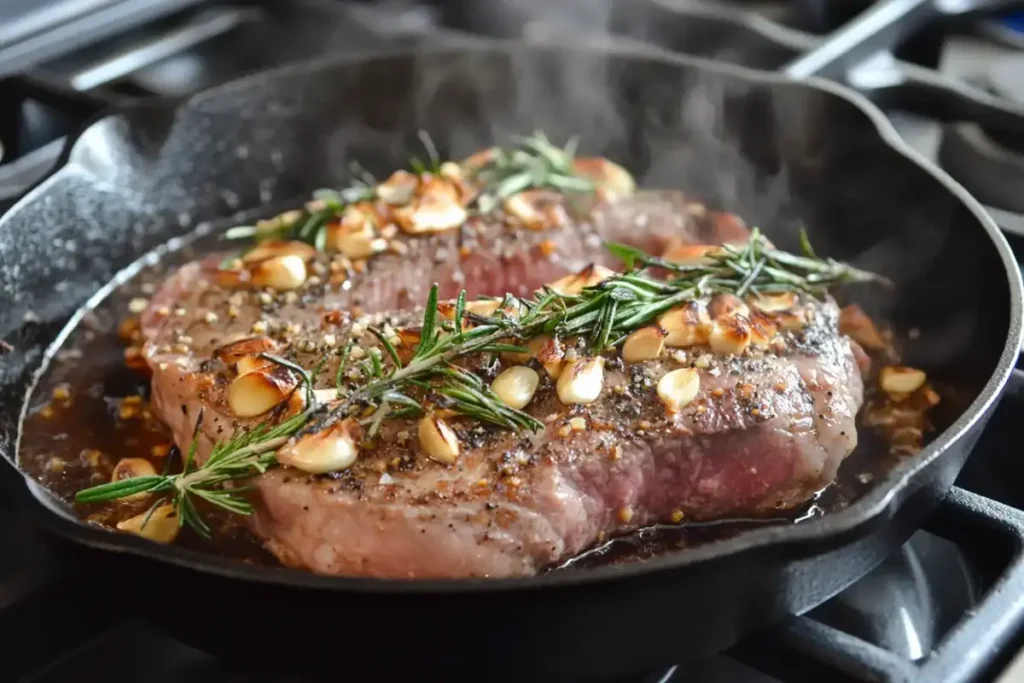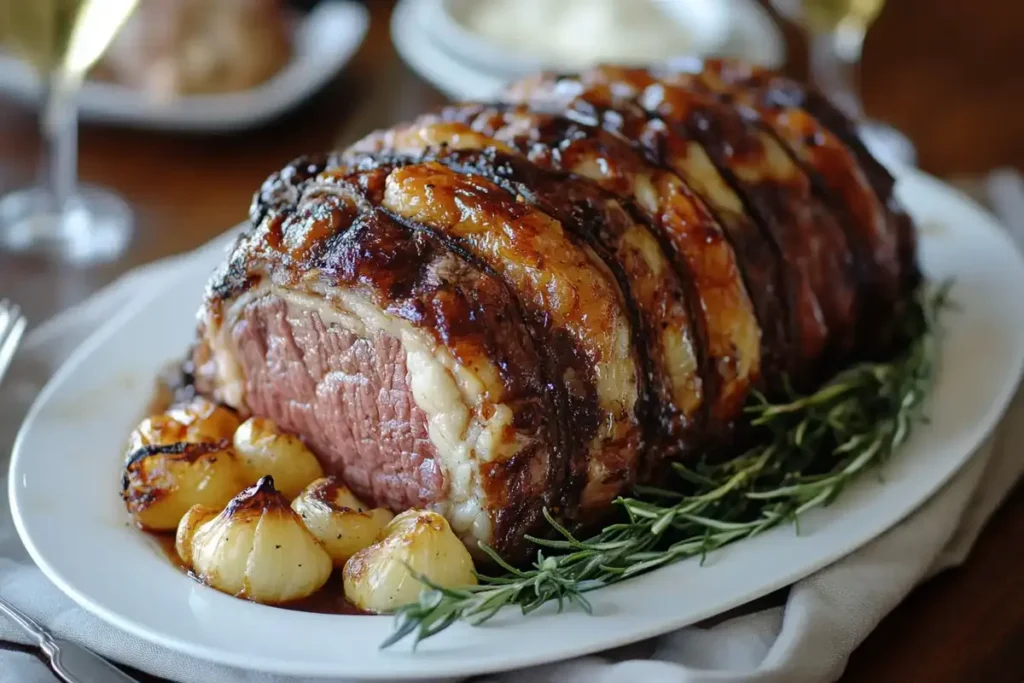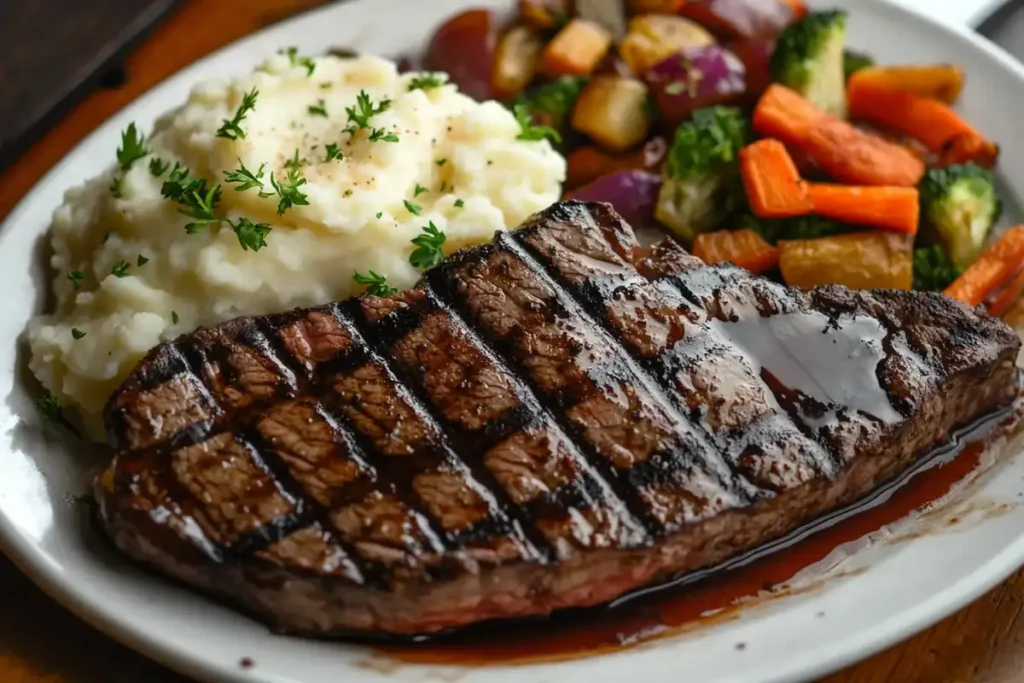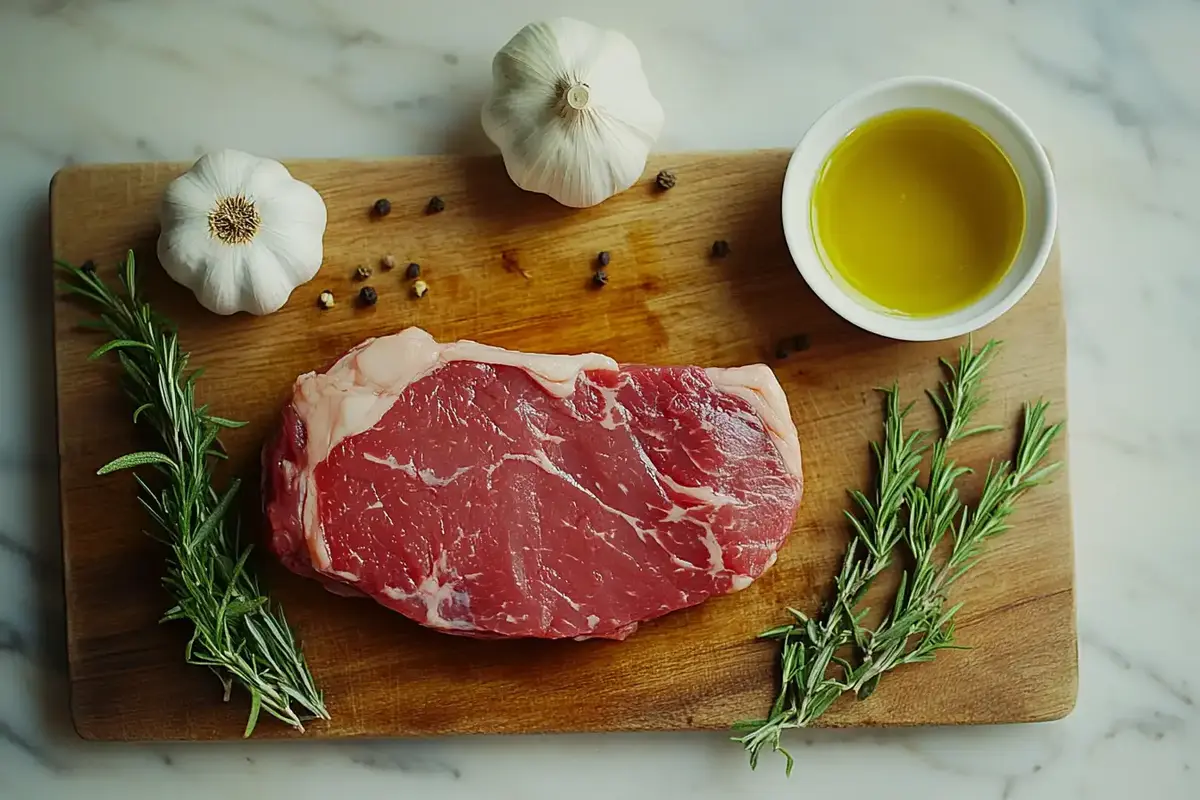Arm steak, often underrated but full of flavor, is a versatile cut that can shine when cooked with care. Whether you’re a seasoned cook or just starting out, understanding how to choose, prepare, and cook this cut can elevate your culinary skills. In this guide, we’ll explore everything from selecting the right arm steak to employing different cooking techniques. Along the way, you’ll discover tips, tricks, and delicious serving ideas that will make arm steak a staple in your meal repertoire.
Understanding Arm Steak
Definition and Characteristics
Arm steak, also known as beef shoulder steak, comes from the chuck section of the cow. This cut is known for its rich flavor, though it can be a bit tough due to the presence of connective tissue. It’s a budget-friendly option compared to premium cuts like ribeye or tenderloin, making it a great choice for everyday meals. When cooked correctly, arm steak delivers a satisfying, hearty bite that pairs wonderfully with a variety of dishes.
Nutritional Value
For health-conscious eaters, arm steak offers a good balance of protein, essential vitamins, and minerals. It’s packed with iron, zinc, and vitamin B12, which are crucial for energy production and overall well-being. Compared to fattier cuts, arm steak is relatively lean, making it suitable for those watching their fat intake. Keep in mind that preparation methods can influence its nutritional profile, so consider healthier cooking techniques when possible.
Selecting and Preparing Arm Steak
Choosing the Right Cut
Selecting the perfect arm steak is crucial for a mouthwatering result. When buying arm steak, focus on its marbling and thickness, as these aspects significantly impact flavor and tenderness. While it’s not as marbled as premium cuts like ribeye, the fat streaks within arm steak contribute to its juicy texture when cooked properly. Thickness also matters—steaks that are at least 1 inch thick cook more evenly and retain moisture better.
If you’re unsure about the quality of the cut, keep an eye out for freshness indicators to ensure you’re getting the best.
Marbling and Thickness
The ideal arm steak should have fine, even streaks of fat, which enhance flavor and keep the meat moist during cooking. Avoid cuts that are too thin or overly fatty, as these may cook unevenly or become greasy. Balanced marbling and consistent thickness create the best results.
Freshness Indicators
Freshness is key when selecting any cut of meat. Look for steak that is bright red, firm to the touch, and free of any off-putting odors. Avoid meat with a grayish hue, excessive liquid in the packaging, or a slimy texture. Checking the sell-by date is another simple but essential step.
Preparing the Steak
Proper preparation sets the stage for a successful dish. From trimming excess fat to marinating for enhanced flavor, every step counts when working with arm steak. With a bit of prep work, you can transform this humble cut into something truly special.
Trimming Excess Fat
Though a little fat adds flavor, too much can cause flare-ups during cooking or result in an overly greasy taste. Use a sharp knife to carefully trim any large pieces of fat or silver skin around the edges, but don’t remove all the fat, as it keeps the steak juicy.
Marinating for Tenderness and Flavor
Marinating is one of the best ways to tenderize arm steak while infusing it with additional flavor. Combine ingredients like olive oil, garlic, herbs, and citrus juice to create a balanced marinade. Let the steak soak for at least 2–4 hours, or overnight for maximum tenderness. The acidity in the marinade breaks down tough fibers, while the oil helps retain moisture.
Anchor Text: Marinating Meat: Tips and Techniques offers a step-by-step guide for creating marinades that enhance both texture and taste.
Bringing Steak to Room Temperature
Before cooking, allow the steak to rest at room temperature for about 30 minutes. This ensures more even cooking, as cold meat can cause uneven heat distribution. Skipping this step often results in a steak that’s overcooked on the outside and undercooked on the inside.
Cooking Techniques
Pan-Searing Arm Steak
Pan-searing is a quick and reliable way to cook arm steak, offering a rich, caramelized crust that locks in flavor. This method is perfect for those who prefer a steak with a seared exterior and a juicy interior. With the right tools and techniques, pan-searing transforms this budget-friendly cut into a restaurant-worthy dish.
Equipment Needed
To pan-sear arm steak, you’ll need a heavy-duty skillet (preferably cast iron), tongs, a meat thermometer, and high-smoke-point oil like avocado or vegetable oil. Cast iron is ideal for achieving even heat distribution and a perfect sear.
Step-by-Step Guide
- Preheat Your Skillet: Heat your cast-iron skillet over medium-high heat for 3–5 minutes until it’s smoking hot.
- Prepare the Steak: Pat the steak dry with paper towels and season generously with salt and freshly cracked black pepper.
- Add Oil to the Skillet: Pour a thin layer of oil into the pan and let it shimmer.
- Sear the Steak: Place the steak in the skillet, pressing gently for even contact. Cook for 4–5 minutes without moving it to form a golden-brown crust.
- Flip and Finish: Flip the steak and cook for an additional 4–5 minutes for medium-rare. Adjust the time for your preferred doneness.
- Rest the Steak: Remove from the skillet and let it rest for 5–10 minutes before slicing against the grain.

Tips for Achieving a Perfect Crust
- Use dry steak to prevent steaming.
- Avoid overcrowding the pan—cook one steak at a time if needed.
- For extra flavor, add garlic and herbs like thyme during the last minute of cooking.
Grilling Arm Steak
Grilling adds a smoky depth to arm steak, making it a favorite for outdoor cooking enthusiasts. With proper preparation, you can achieve a deliciously charred exterior and a tender, juicy center.
Preparing the Grill
- Clean the Grill Grates: Scrub the grates to remove any residue, ensuring a clean surface for cooking.
- Preheat the Grill: Heat one side of the grill to high and the other to medium, creating a two-zone setup for searing and indirect cooking.
- Oil the Grates: Use a paper towel soaked in oil to coat the grates and prevent sticking.
Grilling Process
- Season the Steak: Rub the steak with olive oil and season it with salt, pepper, and your choice of spices.
- Sear Over High Heat: Place the steak on the high-heat zone for 2–3 minutes per side to develop grill marks.
- Finish Over Medium Heat: Move the steak to the medium zone and cook until it reaches your desired doneness. Use a meat thermometer to check the internal temperature.
- Rest Before Serving: Let the steak rest for 5 minutes to retain its juices.
Ensuring Even Cooking
- Flip the steak only once to avoid losing juices.
- Close the lid during indirect cooking to maintain consistent heat.
- Rotate the steak occasionally to prevent over-charring.
Braising Arm Steak
Braising is the go-to method for tenderizing arm steak, especially for those who love melt-in-your-mouth textures. This slow-cooking technique infuses the steak with rich flavors, making it perfect for hearty meals.
Suitable Braising Liquids
Choose flavorful liquids like beef broth, tomato sauce, or a combination of stock and aromatics. These add depth to the dish while tenderizing the meat during the long cooking process.
Slow Cooking Method
- Preheat the Oven: Set your oven to 300°F (150°C).
- Sear the Steak: In a Dutch oven, sear the steak in oil over medium heat until browned on both sides. Remove and set aside.
- Deglaze the Pot: Add onions, garlic, and a splash of broth to the pot, scraping up any browned bits.
- Combine Ingredients: Return the steak to the pot, add your chosen liquid, and bring to a simmer.
- Cook Low and Slow: Cover the pot and transfer it to the oven. Cook for 2–3 hours, checking occasionally to ensure the liquid doesn’t dry out.
Enhancing Flavor with Aromatics
Add herbs like rosemary, thyme, or bay leaves, along with root vegetables like carrots and celery, to the braising liquid. These aromatics create a savory, comforting flavor profile that pairs beautifully with the tender meat.

Determining Doneness
Using a Meat Thermometer
When cooking arm steak, knowing when it’s done is vital for achieving the perfect texture and flavor. Using a meat thermometer ensures accuracy, taking the guesswork out of cooking. Insert the thermometer into the thickest part of the steak, avoiding contact with bone or fat, to get an accurate reading. This simple tool helps you achieve your desired doneness, from rare to well-done, without overcooking.
Temperature Guidelines for Different Levels of Doneness
- Rare: 120–125°F (49–52°C)
- Medium-Rare: 130–135°F (54–57°C)
- Medium: 140–145°F (60–63°C)
- Medium-Well: 150–155°F (65–68°C)
- Well-Done: 160°F (71°C) or higher
By following these temperature ranges, you can cook arm steak to match your preferences, ensuring a delicious result every time.
Avoiding Overcooking
Overcooked steak loses its moisture and tenderness, resulting in a tough and dry texture. To avoid this, remove the steak from heat when it’s 5°F (3°C) below your desired temperature. The residual heat will continue to cook the steak, bringing it to perfection.
Resting and Serving
Importance of Resting the Steak
Resting your steak after cooking is a game-changer. This crucial step allows the juices, which are pushed to the surface during cooking, to redistribute evenly throughout the meat. Skipping this step can result in dry, flavorless bites, as the juices escape when the steak is sliced too soon.
Allowing Juices to Redistribute
During resting, the fibers in the meat relax, locking in the flavorful juices. As a result, every bite becomes tender and moist. Resting also enhances the overall texture of the steak, making it more enjoyable to eat.
Optimal Resting Time
The ideal resting time for arm steak depends on its size and thickness. For most cuts, 5–10 minutes is sufficient. Use a tent of aluminum foil to keep the steak warm while allowing it to rest without continuing to cook excessively.
Serving Suggestions
How you serve arm steak can elevate its presentation and taste. From slicing techniques to thoughtful accompaniments, the finishing touches can make all the difference.
Slicing Against the Grain
To maximize tenderness, always slice the steak against the grain. This means cutting perpendicular to the direction of the muscle fibers. Doing so shortens the fibers, making each bite easier to chew and more enjoyable.
Accompaniments and Side Dishes
Pair arm steak with complementary sides to create a balanced and satisfying meal. Consider classic options like mashed potatoes, roasted vegetables, or a fresh garden salad. For a twist, serve it with chimichurri sauce or garlic butter to add a burst of flavor. Steamed asparagus, sautéed mushrooms, or crusty bread can also round out the dish beautifully.

Frequently Asked Questions (FAQs)
How Long Should I Marinate Arm Steak?
Marinating arm steak for 2–4 hours allows enough time for the flavors to penetrate the meat and tenderize it. For optimal results, marinate overnight in the refrigerator, but avoid exceeding 24 hours, as the acids in the marinade can break down the meat too much, resulting in a mushy texture. Always use a non-reactive container, like glass or plastic, to prevent any unwanted flavors.
Can I Cook Arm Steak in the Oven?
Yes, cooking arm steak in the oven is an excellent option. For a foolproof method, start by searing the steak in a hot, oven-safe skillet on the stovetop to develop a crust. Then, transfer it to a preheated oven at 375°F (190°C) and cook until it reaches your desired internal temperature. This combination of stovetop and oven cooking ensures a flavorful crust and evenly cooked interior.
What Is the Best Way to Tenderize Arm Steak?
The best way to tenderize arm steak is by using a combination of methods. Marinating the steak with acidic ingredients like citrus juice or vinegar breaks down tough fibers, while mechanical tenderization (using a meat mallet) softens the meat further. Slow-cooking methods like braising also tenderize the steak by breaking down connective tissue over time.
How Do I Store Leftover Cooked Arm Steak?
Store leftover cooked arm steak in an airtight container in the refrigerator for up to 3–4 days. To maintain its flavor and texture, slice the steak before storing, and include any leftover juices to keep it moist. For longer storage, freeze the steak in a vacuum-sealed bag or freezer-safe container for up to 3 months. Thaw frozen steak in the refrigerator before reheating.
Is Arm Steak Suitable for Stir-Fry Dishes?
Absolutely! Arm steak works well in stir-fry dishes, but preparation is key. Slice the steak thinly against the grain and marinate it briefly to enhance its flavor. Cook the slices quickly over high heat to avoid toughness, and pair them with vibrant vegetables and savory sauces for a delicious meal.
What Are Some Recommended Marinades for Arm Steak?
Recommended marinades for arm steak include combinations of olive oil, garlic, lemon juice, soy sauce, and fresh herbs. For an Asian-inspired flavor, mix soy sauce, sesame oil, ginger, and a touch of honey. For a classic steakhouse vibe, try Worcestershire sauce, mustard, and a splash of balsamic vinegar. These marinades enhance the steak’s natural flavor while adding depth.
Conclusion
Summarizing the Best Practices for Cooking Arm Steak
Cooking arm steak is an art that transforms this humble cut into a culinary masterpiece. Start by selecting a cut with balanced marbling and freshness, then prepare it by trimming excess fat and marinating for tenderness. When cooking, choose methods like pan-searing, grilling, or braising, each offering unique flavors and textures. Use a meat thermometer to ensure precise doneness and rest the steak to lock in its juices.
Finally, serve with thoughtful accompaniments and slice against the grain to elevate the dining experience. Whether you’re creating a simple weeknight meal or an impressive dinner, mastering the art of cooking arm steak ensures flavorful and satisfying results every time.

